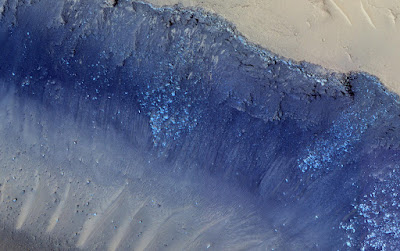The probability of life on Mars increased with the discovery of a young volcano
Scientists find evidence of Martian volcanic activity 50 million years ago discovered that could be a sign of life on this planet. Most Martian volcanoes formed about 3 to 4 billion years ago and were active until 3 million years ago, but it is not clear if they are active now.
With data from Martian satellites, researchers were able to discover a volcano that was hitherto unknown. This is the youngest volcano ever discovered. If we want to show the entire geological history of Mars on a one-day scale, this volcano formed at the last second of that day. The width of this volcano is about 13 km and its height is 32 km.
Most Martian volcanoes formed with lava flowing on the surface of Mars, much like the recent eruption of Iceland, but evidence suggests that it formed with a large explosion on the surface of Mars. Such explosions on the planet are not unprecedented and occurred long ago. This young volcano could scatter ash in the Martian atmosphere in each eruption up to 10 km above the summit.
Satellite image of Cerberus Fossa. Source: NASA
Researchers believe that the eruption of this young volcano is due to the movement of magma in the depths of Cerberus Fosa, Mars. Such volcanic activity could increase the likelihood of life beneath the planet's surface. The reaction between the magma and the ice surface can make this area habitable for microbial life. Similar volcanic eruptions could also have caused groundwater and massive flooding on Mars 20 million years ago.
Scientists are still searching for the cause of such explosions. One possibility is a direct reaction of the magma to the deep ice layer of Mars. Contact of hot magma with deep ice on Mars can produce gases that can explode as they accumulate in the bottom layers of Mars. NASA data also show that this young volcano could be one of the agents emitting methane gas into the Martian atmosphere and one of the reasons for the planet to dry up and cool down.
 Main Page
Main Page

Comments